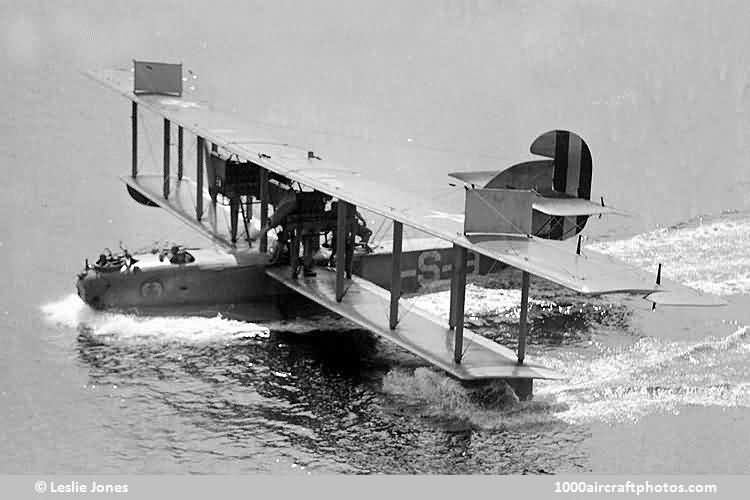06/15/2013. Remarks by Johan Visschedijk: "Although it clearly showed its ancestry in earlier Curtiss twin-engined flying boats, the F-5-L (also referred to as the F-5L) did not carry a Curtiss designation. Actually, it was not even a Curtiss design; it was one of several established European models chosen for production in the United States in 1917.
The four-crew F-5-L patrol flying boat evolved from the original Curtiss America of 1914 after Lieutenant John Cyril Porte, one of its designers, returned to England after the war began. For the RNAS he developed improved versions of the America, the several H-boats called Small Americas, and the H-12 that Curtiss supplied to the RNAS were called Large Americas. The first of the production British built developments was the F.2, the F standing for the government aircraft plant at Felixstowe.
The wings, empennage, and power plant arrangement of the British F-boats were essentially Curtiss; Porte's principal contribution to the design was an improved hull. Porte's F.5 model was a parallel design to Curtiss's H-16. While the British F.5s used 345 hp Rolls-Royce Eagle engines, the American versions, redesigned to American standards by the USN, were built with 400 hp Liberty 12A engines, hence the letter L in the designation.
The principal recognition points between the F-5-L and the improved Liberty-engined H-16 was the horn-balanced parallel-chord aileron and balanced rudder of the former, and its noticeably different hull lines and open cockpits instead of the enclosed cabin of the H-16. The F-5-L carried an armament of 6 to 8 flexible 0.30 in (7.62 mm) machine guns and four 230 lb (104 kg) bombs.
Although the F-5-L design belonged to the US Government, its well-known Curtiss ancestry, plus the fact that some were built by Curtiss, has caused it to be widely regarded as a Curtiss. Curtiss built sixty F-5-Ls, Canadian Aeroplanes Ltd. built thirty, and the US Naval Aircraft Factory built 138. After the war, redesigned vertical tail surfaces were introduced by the Navy on the two of the last three Navy-built F-5-Ls which were redesignated F-6. These new tails were then retrofitted to all F-5-Ls in service.
When the Navy adopted an aircraft designation system in 1922, aircraft already in service retained their original designations but the F-5-Ls unofficially became PN-5 (P for Patrol, N for Navy, regardless of actual manufacturer). Two F-5-L hulls were fitted with entirely new wings and 525 hp geared Wright T-2 engines in 1923 and became PN-7s. Duplicate models with the hull built of metal instead of wood were PN-8s.
Further Navy-designed variants continued up to PN-12, with production versions of the PN-12 being built by Martin as PM-1 and PM-2, Douglas as PD-l, Keystone as PK-l, and Hall as PH-1, PH-2, and PH-3 in the late 1920s and early 1930s. The Halls served into 1943 to carry the direct descendants of the America through two World Wars.
Early in 1919 F-5-L A3864 was modified by the Navy to a tandem-engine design to test the concept of one tractor and one pusher engine in a single nacelle for possible modification of the existing NC-1 and NC-2 three-engined flying boats. This variant survived to March 1925. A number of surplus F-5-Ls were converted to l6/20-passenger transports by several overwater airlines in the 1920-1924 era.
Coded 1-S-9 the pictured F-5-L belonged to Scouting Squadron One (VS-1) and shows the postwar tail modification."
